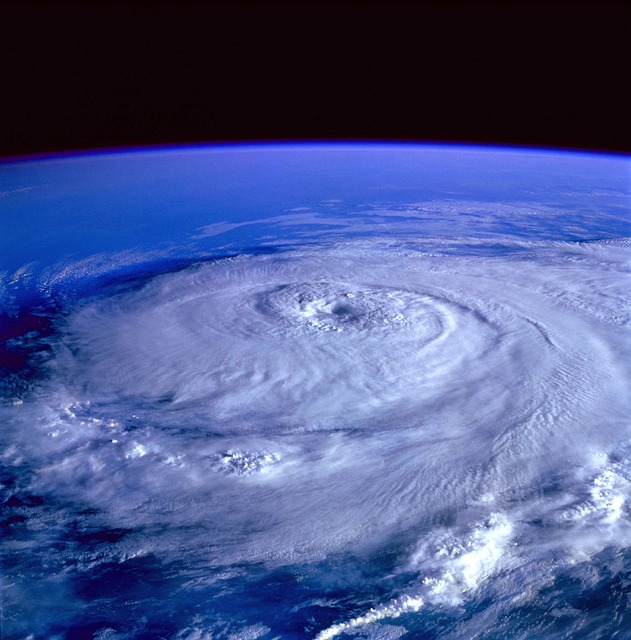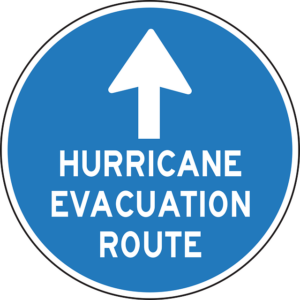
Hurricane Season is here – now what?
Last week we reviewed common meteorological terminology from the National Hurricane Center. We also explored the different hurricane catagories and what can be expected from each. Today we’ll review what to do prior, during and after a hurricane strikes.
Be prepared
There are many ways to prepare for a hurricane, most involve planning. According to Ready.gov, implementation of the preparedness program includes identifying and assessing resources, writing plans, developing a system to manage incidents and training employees so they can execute plans.
At Ready.gov, implementation plans are broken down into the following areas:
- Resource Management: Resources needed for responding to emergencies, continuing business operations and communicating during and after an incident should be identified and assessed.
- Emergency Response Plan: Plans to protect people, property and the environment should be developed. Plans should include evacuation, sheltering in place and lockdown as well as plans for other types of threats identified during the risk assessment.
- Crisis Communications Plan: A plan should be established to communicate with employees, customers, the news media and stakeholders.
- Business Continuity Plan: A business continuity plan that includes recovery strategies to overcome the disruption of business should be developed.
- Information Technology Plan: A plan to recover computer hardware, connectivity and electronic data to support critical business processes should be developed.
- Employee Assistance & Support: The business preparedness plan should encourage employees and their families to develop family preparedness plans. Plans should also be developed to support the needs of employees following an incident.
- Incident Management: An incident management system is needed to define responsibilities and coordinate activities before, during and following an incident.
- Training: Persons with a defined role in the preparedness program should be trained to do their assigned tasks. All employees should be trained so they can take appropriate protective actions during an emergency.
For an in-depth description of the above plans go here and click on the bolded subtitle. Or access the Ready.gov business toolkit here to see if your business in hurricane ready.
Other things to consider prior to a hurricane are:
* A review of your business insurance policy;
* Removal of items outside the facility that could become a flying missile during the storm;
* A designated safe room for employees;
* Appropriate first aid/emergency kits.
For more information and tips on hurricane preparedness check out the links below:
https://www.weather.gov/safety/hurricane-plan
https://www.osha.gov/hurricane/preparedness
So you’re in the path of a hurricane – what should you do?
 If you are in the path of a hurricane, are in a flood prone area or one susceptible to storm surge, avoid travel unless you are ordered to evacuate. If you are told to evacuate – do it, and follow the recommended evacuation route. But never drive through floodwater. It only takes a foot of water to sweep away a car. And if the road is covered with water – you don’t know the state of the blacktop beneath. Watch for downed power lines and other road hazards such as washed-out roads or bridges.
If you are in the path of a hurricane, are in a flood prone area or one susceptible to storm surge, avoid travel unless you are ordered to evacuate. If you are told to evacuate – do it, and follow the recommended evacuation route. But never drive through floodwater. It only takes a foot of water to sweep away a car. And if the road is covered with water – you don’t know the state of the blacktop beneath. Watch for downed power lines and other road hazards such as washed-out roads or bridges.
Remaining in an area slated for a direct hit is dangerous for individuals and it creates dangerous situations for those involved in search and rescue missions. If you can not evacuate, find a place safe from water and wind – possibly an interior room with no windows that puts as many walls between you and the storm outside.
It’s important to receive weather alerts and forecast updates so make sure you have Wireless Emergency Alerts enabled on your phone. Be aware that conditions can change quickly as a storm intensifies.
The storm has passed – now what?
Even though the storm has passed, there are still dangers associated with the event. Pay attention to local officials and area alerts. Don’t walk, swim or drive through flood waters.
 When cleaning up after a hurricane be sure to wear protective clothing and use masks if dealing with mold. If you have asthma or other lung conditions and/or immune suppression, don’t enter buildings with indoor water leaks or mold growth.
When cleaning up after a hurricane be sure to wear protective clothing and use masks if dealing with mold. If you have asthma or other lung conditions and/or immune suppression, don’t enter buildings with indoor water leaks or mold growth.
According to the National Oceanic and Atmospheric Administration (NOAA), dangers remain even after the skies turn blue. This is NOT the time to put your guard down. Nearly half of hurricane fatalities occur after the storm.
NOAA suggests:
- Be careful near damaged buildings. Walk carefully around the outside of your home [or facility] to check for loose power lines, gas leaks, and structural damage, including dangerous debris such as nails or glass. Leave your home or facility if there’s shifting or unusual noises. If you smell gas, get outdoors immediately and call 911.
- Avoid electric shock by staying far away from downed power lines. Stay alert: they may be on the ground, hidden in water, or dangling overhead.
 Even though the event has passed, flooded roads are still very dangerous. According to NOAA, flooded river areas can continue to rise long after a storm passes. Additionally, don’t walk in floodwaters. They can contain harmful bacteria, chemicals and/or sharp objects.
Even though the event has passed, flooded roads are still very dangerous. According to NOAA, flooded river areas can continue to rise long after a storm passes. Additionally, don’t walk in floodwaters. They can contain harmful bacteria, chemicals and/or sharp objects.
Don’t forget to document any property damage with photographs for your insurance company.
Finally, you may be on your own for a while since emergency responders may be overwhelmed. Communication systems may be impacted due to network congestion, but there’s always a text, email or social media.
Stay safe this and every hurricane season.
Images courtesy of Pixaby














